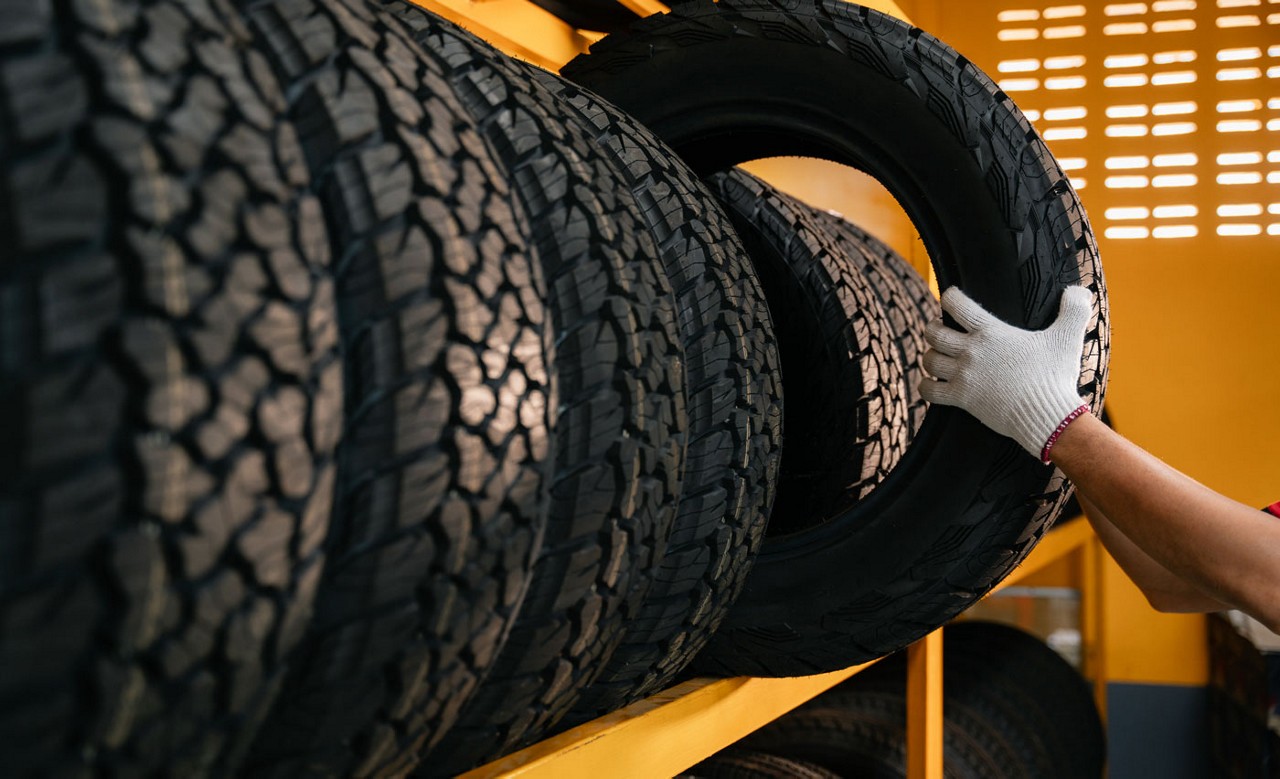To ensure you receive the best service possible,
please enter your zip code below:

Round, rubber and reliably linked to safety – we’re talking about tires, of course. And while the difference in tire types can seem cosmetic on the surface, the benefits or consequences of the tires we choose turn out to be about a lot more than looks, or even cost. Whether you’re the A-to-B commuter or the long-haul vacationer, the tires you select, the care you give them and the intervals at which you replace them play an important role in road performance, fuel-efficiency, handling, grip and the life of your vehicle.
In this guide, we’ll break-down the seven primary tire types, the reasons tire size and capability matter, some indicators for sidewall wear and replacement, tips for tire-pressure monitoring and general information on tire maintenance. Because if your vehicle’s contact with the road and its four supporting structures aren’t right, simple driving actions can quickly shift from routine to dangerous.

In the tire-selection process, size and capability are crucial. No matter how high-quality your tires are, if they can’t properly support the weight of your vehicle, your ability to brake safely and counteract weather conditions could be compromised.
You can generally find the size of your tires listed on the inside frame of your driver’s side door, on the sidewall of your tire or in your owner’s manual. The number may display as something that looks like “P215/65/R15” or “P225/70/R16,” for example. (In the first number/letter combination example, “P” represents tire type, “215” is the width, “65” is the aspect ratio, “R” is the construction type and “15” is wheel diameter.)

Tire treads are the part of the rubber on the tire that makes direct contact with the road. As you drive, the rubber slowly rubs away, and treadwear grade (sometimes called treadwear rating) is a government-required number that indicates a tire’s expected wear (i.e., how long before it rubs away).
While treadwear ratings are found on most new tires, Consumer Reports warns they aren’t a true measure of how long a tire might last. Some of the reason for this is that tire manufacturers test and rate their own tires, as opposed to third-party, independent agencies doing it. Methods for testing can differ, and ratings may not be standardized across brands.

Research from AAA reveals that driving on relatively worn tires at highway speeds in wet conditions can increase average stopping distances by a staggering 43%, or an additional 87 feet—more than the length of a semitrailer—when compared with new tires.
Common signs that you need to replace your tires include:

Many newer vehicles (2008 and beyond) have wheels that are fitted with sensors that monitor tire pressure and notify the driver when there’s a significant loss in inflation. Though federally required, there’s no mandate about which tire pressure monitoring system (TPMS) technology must be used. Some TPMS systems may alert you with a simple light indicator, others provide a full read-out on the compromised tire(s).
If your vehicle does not have a TPMS, be sure to check your tires manually at least once a month, when the temperature changes or when your tires look low on air. There are places you can purchase aftermarket TPMS systems, but they tend to require professional installment and can be expensive.
If you’re looking to find the recommended air pressure for your tires quickly, check the placard on the inside panel of the driver’s door. Along with the car manufacturer’s recommended tire size, this placard will inform you of the correct level of air needed for your tires in pounds per square inch (PSI).
While there is information on your tire’s sidewall about the maximum air pressure your tire could hold, the correct number to reference when filling your tires will be on the driver’s side door jam.

Earlier in this guide we discussed how to understand tire type, tire width, tire aspect ratio, tire construction type and wheel diameter from the alphanumeric code on the sidewall of your tires. Additionally, we touched on load index and speed rating, also listed on the sidewall. But did you know there are other details on your sidewall that are critical, and even legally required?

Like other parts of your vehicle, your tires require routine maintenance to stay in tip-top shape and to help extend the life of your car. Here are some maintenance tips:
Car care
Are you concerned about your tires? Do you need a professional to check them? AAA Car Care and AAA Approved Auto Repair facilities are nearby.